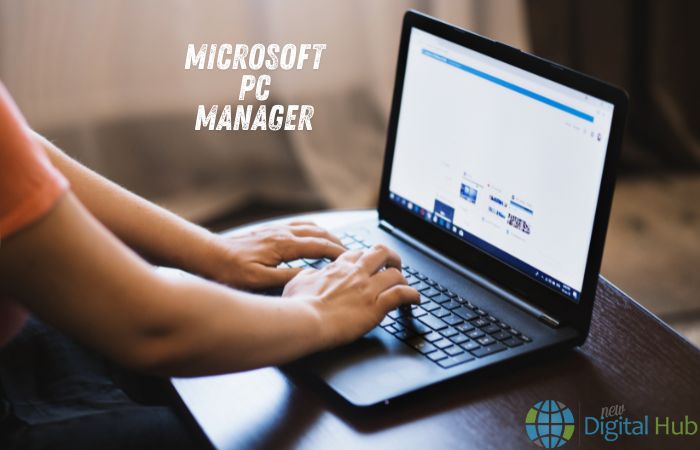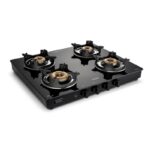If your Windows PC has been slowing down, freezing at random moments, or taking forever to boot, you’ve probably searched for tools that promise to improve performance. One name you may have come across is Microsoft PC Manager. And honestly, the name itself sounds reassuring because it comes straight from Microsoft.
But what exactly does this tool do? Should you trust it? Is it worth installing? And how does it compare to other PC optimization tools?
In this article, I’m breaking everything down in a simple, jargon-free way so you clearly understand whether Microsoft PC Manager is right for you.
What Is Microsoft PC Manager?
Microsoft PC Manager is a free utility tool developed by Microsoft for Windows 10 and Windows 11 users.
It’s like an all-in-one maintenance software designed to:
- Clean junk files
- Boost performance
- Free up storage
- Manage startup programs
- Reduce unwanted pop-ups
- Run health checks
- Improve system stability
- Monitor PC performance
Think of it as Microsoft’s own version of a PC cleaner, but simpler, lighter, and safer than random third-party apps that may or may not be trustworthy.
Why Did Microsoft Create This Tool?
There are already many optimization apps in the market. But most users hesitate to trust them because:
- Some include bloatware
- Many display aggressive ads
- A few are borderline risky or unnecessary
- Others over-clean and break system files
Microsoft created PC Manager so users could have a safe, official, built-in environment for system cleaning and performance optimization.
It’s particularly useful for people who are not tech-savvy and just want an easy “fix my computer” tool.
Top Features of Microsoft PC Manager
Let’s go through the features one-by-one so you know exactly what you’re getting.
1. PC Boost Feature
This is the feature most users try first.
The “Boost” button:
- Clears temporary files
- Frees up RAM
- Closes background processes you don’t need
It’s similar to tapping the “clear memory” button on a smartphone.
When to use it:
When your PC feels slow, laggy, or overloaded.
2. Storage Cleanup
Storage cleanup is one of the most helpful parts of Microsoft PC Manager because it organizes all your junk files in one place.
It helps you remove:
- Temporary cache files
- Recycle bin data
- Old update backups
- Software leftovers
- Temp folder clutter
- Browser junk
It also shows you which files are taking the most space so you can delete or move them.
3. Health Check
This section quickly scans your system and gives recommendations to improve:
- Speed
- Storage
- Security
- System stability
It acts like a personal PC doctor that tells you what’s wrong and how to fix it.
4. Startup App Manager
A slow boot time is usually caused by too many apps starting automatically.
This feature allows you to:
- View startup apps
- Disable unnecessary ones
- Speed up your Boot experience
Disabling useless start-up apps can sometimes speed your boot time by 40–60%.
5. Process Management
This tool works like a simpler version of the Task Manager.
It shows:
- Which apps are consuming CPU
- Which apps are consuming RAM
- Background tasks that slow down your PC
You can close them directly from the PC Manager interface.
6. Pop-Up Blocker
If you’re tired of random apps showing pop-ups every time you restart your PC, this is a lifesaver.
It helps you:
- Block unnecessary pop-ups
- Reduce annoying notifications
- Control which apps can display prompts
This is especially helpful for people who install a lot of software.
7. Security & System Protection
While Microsoft PC Manager is not a separate antivirus, it does strengthen system protection by connecting with:
- Windows Security
- Built-in malware protection
- System update checks
It ensures your PC stays secure without requiring additional tools.
8. Toolbox Options
The toolbox contains quick shortcuts to useful system tools like:
- Screen capture
- File management
- Task manager
- Disk cleanup
- System restore
- System settings
All in one clean interface.
Why I Think Microsoft PC Manager Is Worth Trying
After testing various optimization tools, here’s why I feel Microsoft PC Manager stands out:
1. It’s Made by Microsoft
You don’t have to worry about viruses, fake cleaners, or hidden malware.
It’s official, safe, and integrated into the Windows ecosystem.
2. It’s Free
Many optimization tools charge a premium or lock features behind a paywall.
Microsoft PC Manager is 100% free with all features available for everyone.
3. Beginner-Friendly Interface
Even if you’re not tech-savvy, the interface is clean, simple, and easy to understand.
No complicated menus.
No confusing terms.
Just buttons like:
- Boost
- Clean
- Manage apps
4. Lightweight & Fast
It doesn’t slow your PC.
It doesn’t run heavy background processes.
It doesn’t drain RAM.
It’s extremely lightweight.
5. Reduces Dependence on Third-Party Tools
Instead of installing multiple apps like:
- CCleaner
- Advanced SystemCare
- PC Booster apps
- RAM cleaners
You get everything built directly into one Microsoft tool.
Limitations of Microsoft PC Manager
As great as it is, the tool has a few limitations you should know.
1. Not for Advanced Users
If you’re a power user and want deep-level tools like:
- Driver updates
- Registry cleaners
- Hardware stress tests
- GPU tuning
- Game optimization
Then PC Manager may feel basic.
2. It Might Reset Some Microsoft Defaults
During system repair, the tool might restore:
- Default browser settings
- Default file-opening programs
- Microsoft recommendations
This isn’t harmful, but it may inconvenience some users.
3. Cleanup Is Not As Deep As Competitors
Some third-party tools scan more locations.
Microsoft PC Manager focuses mostly on safe, essential cleaning only.
4. Not a Replacement for an Antivirus
It improves performance and security but does not replace a full antivirus suite.
Who Should Use Microsoft PC Manager?
This tool is ideal for:
- Everyday PC users
- Students
- Office workers
- Senior citizens
- Home users
- People who want a safe cleanup tool
- People tired of their PC lagging
It’s not ideal for:
- Gamers who need advanced tuning
- Tech professionals
- Developers needing deep control
- People using heavy apps like editing software
Step-by-Step Guide on Using Microsoft PC Manager
Here’s how I recommend using it weekly:
Step 1: Run a Health Check
Scan your PC for:
- Junk files
- System issues
- Startup problems
- Security recommendations
Step 2: Boost Your PC
Clear temporary RAM usage and background tasks.
Step 3: Clean Storage
Delete unnecessary files and large leftover items.
Step 4: Manage Startup Apps
Disable anything you don’t need at boot.
Step 5: Use the Toolbox
Check hidden problems using quick tools when needed.
Step 6: Review Pop-Up Controls
Disable apps causing repeated notifications.
Step 7: Scan Weekly
Make it a weekly habit to maintain your PC’s health.
Is Microsoft PC Manager Safe?
Yes — it is completely safe.
Since the tool comes directly from Microsoft, it doesn’t include:
- Ads
- Malware
- Hidden installations
- Suspicious cleanup scripts
- Risky registry cleaners
It mainly focuses on safe, basic, everyday maintenance.
Final Verdict: Should You Use Microsoft PC Manager?
If you want a simple, safe, and reliable tool to keep your PC running smoothly, Microsoft PC Manager is absolutely worth using.
It’s not overly advanced.
It’s not complicated.
It doesn’t try to be a “magic performance booster.”
And it certainly doesn’t do anything risky.
Instead, it provides a:
- Clean interface
- Easy cleanup
- Performance boost
- Storage management
- Startup control
- Pop-up blocking
- System health monitoring
Wrapped into one lightweight, Microsoft-made application.
So yes — I’d definitely recommend giving Microsoft PC Manager a try if you want an easy, no-nonsense way to keep your Windows PC fast and stable.



